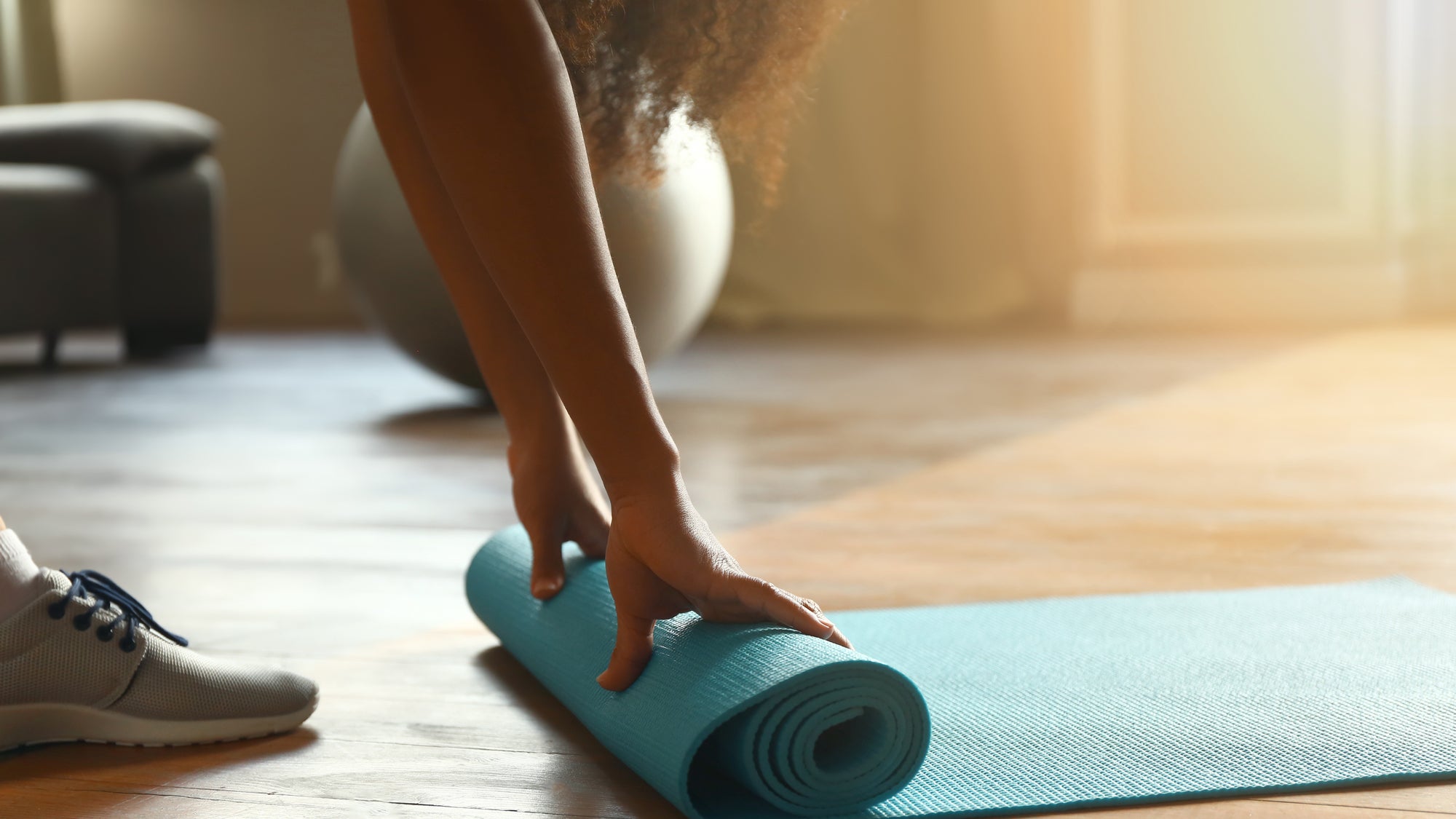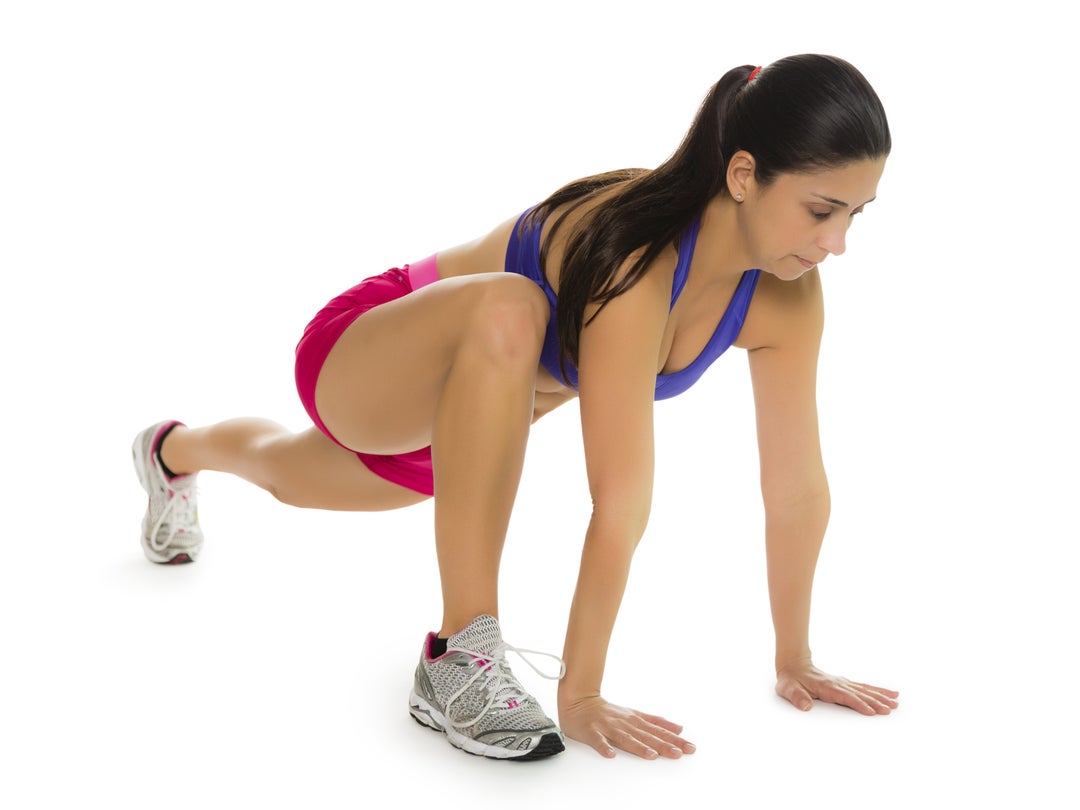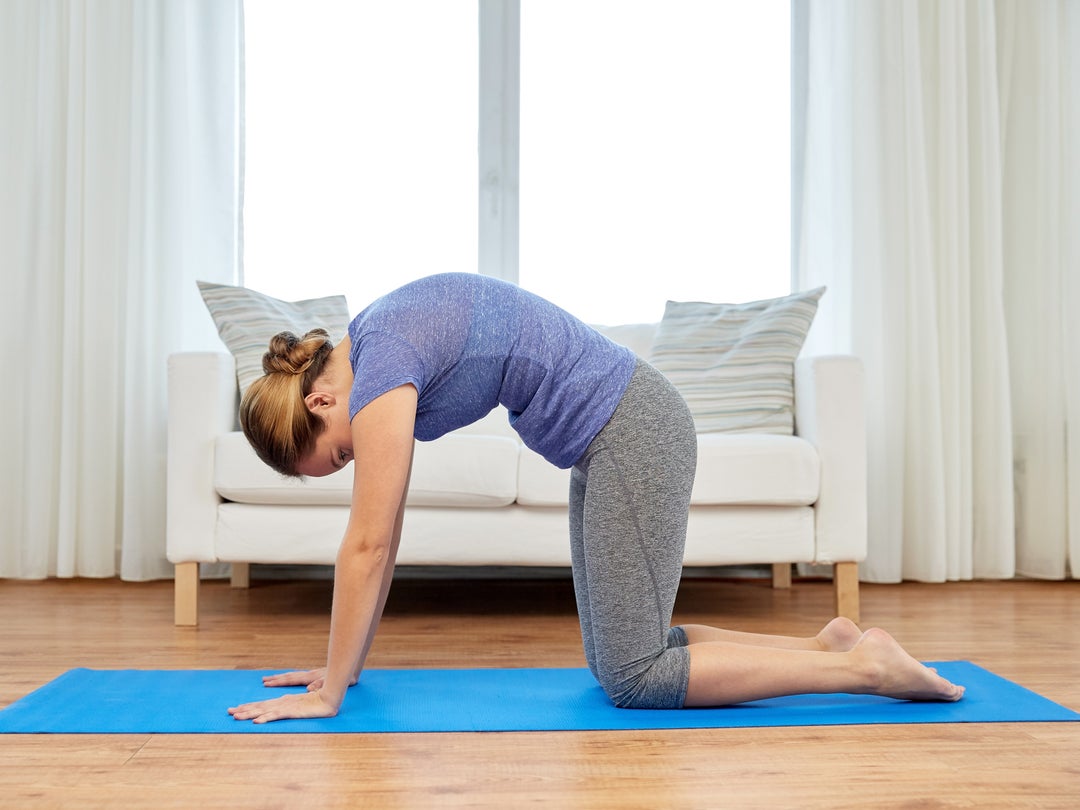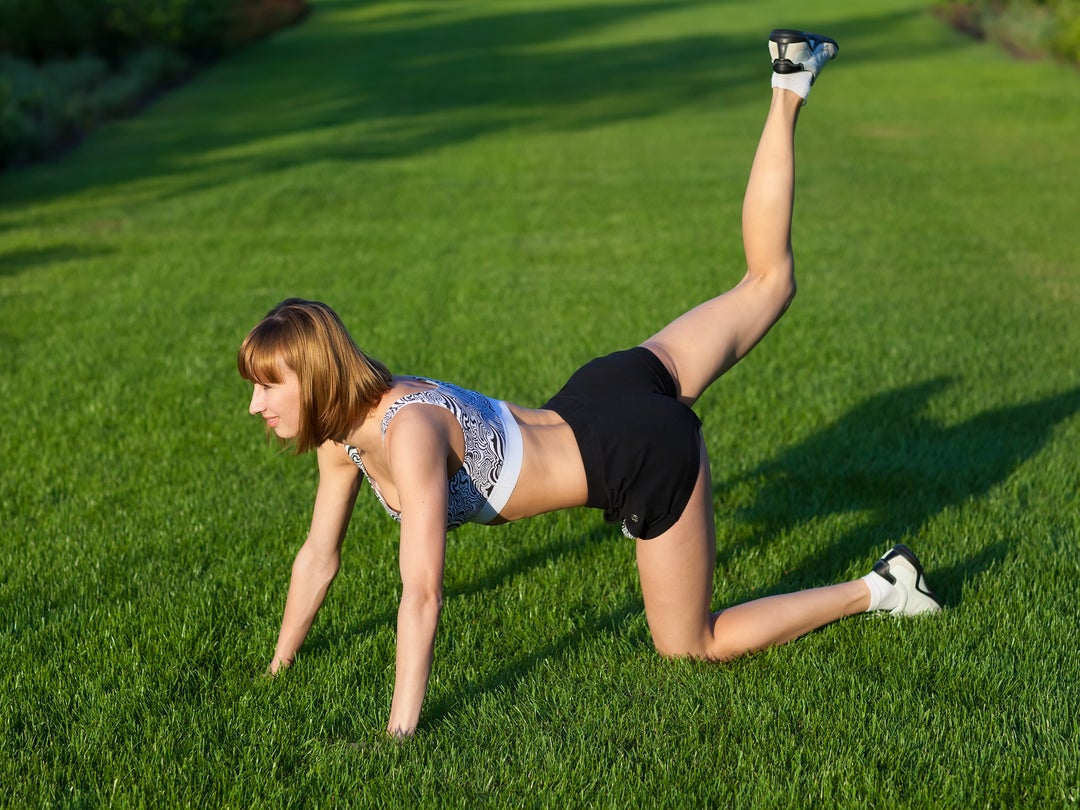3 Essential Yoga Moves for Triathletes

For busy age-group triathletes, stretching, yoga, and strength training are often the first sessions skipped. But Becky Nickerson, founder of Infinity Yoga and lead teacher/trainer for YogaWorks, explains yoga has more benefits than just a good stretch. “By practicing yoga regularly, you’ll use muscles you don’t normally engage during tri training, which in turn gives you more power, longevity, and faster recovery,” she says. “In yoga we move with the breath and with this breath training you’ll learn to maximize oxygen utilization with each breath repetition.”
Here Nickerson outlines three essential yoga moves for triathletes. Even the busiest athlete can incorporate these into training!
Runner’s Lunge to Half Split
Benefit: Increased hip flexor and hamstring flexibility

Starting from tabletop, step the right foot forward between your hands. Sink your right hip forward and down until you feel a stretch; hold for 30 seconds. To add the half split with the right leg in front, shift your hips back and move your hands back until you can straighten your right leg. You might need to inch your left knee back so that it goes underneath the left hip. Hold again for 30 seconds. Repeat on opposite side.
Cat and Cow
Benefit: Increased spinal stability and flexibility

Begin in a tabletop position, aligning wrists under shoulders and hips over knees. Move with your breath—in and out through your nose. On inhalation, drop your belly, extend your spine, and look up. On exhalation, round your back into spinal flexion, and look to your navel. Repeat 5-10 times.
Hip Circles
Benefit: Increased hip range of motion

From a tabletop, extend your right leg back. Pause and observe your pelvis to ensure it stays level—key for core stability. Now bend the right knee and circle the femur bone in the hip socket. Make the circles as big as possible while maintaining a level pelvis. If the pelvis moves, make the circles smaller to ensure good form. As you gain core stability, your ability to make larger circles will increase. Do five circles in one direction, then five circles in the other direction. Repeat on the left side.